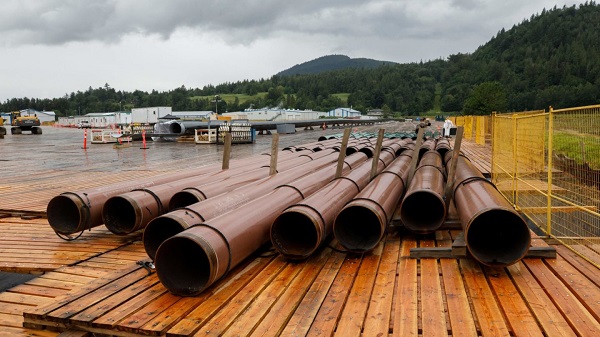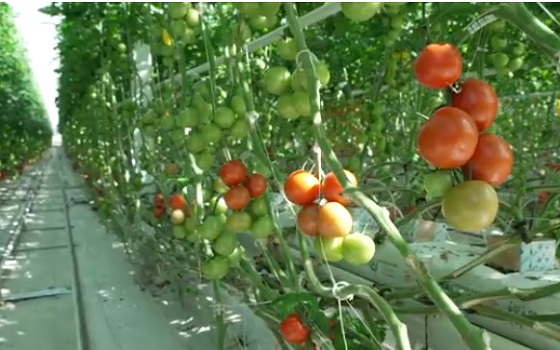Alberta
Half of Red Deer COVID-19 cases recovered. Central Alberta COVID death occurred in Camrose (April 6 Update)

Information from covid19stats.alberta.ca
On Monday, April 6 the province made some interesting changes and additions of the provincial COVID-19 stats website.
Red Deer is no longer separated into 3 quadrants. But the report now indicates how many cases are active and how many are recovered.
Across Central Alberta there are 66 cases.

- Red Deer City – 25 cases – 13 active – 12 recovered
- Red Deer County – 13 cases – 11 active – 2 recovered
- Wetaskiwin City – 7 cases – 3 active – 4 recovered
- Mountain View County – 5 cases – 4 active – 1 recovered
- Lacombe County – 4 cases – 1 active – 3 recovered
- Lacombe City – 2 cases – 0 active – 2 recovered
- Camrose City – 2 cases – 0 active – 1 recovered – 1 death
- Beaver County – 2 cases – 2 active
- Camrose County – 1 case – 1 recovered
- Windburn County – 1 case – 1 recovered
- Vermilion River County – 1 case – 1 recovered
- Ponoka County – 1 case – 1 active
- Stettler County – 1 case – 1 active
- Kneehill County – 1 case – 1 active
- Clearwater County – 1 case – 1 active
In this graph you can see that Central and Southern Alberta zones have been very fortunate in the amount of cases per 100,000

This graph makes it look like all the regions in Alberta “might” be flattening the curve. Experts say it takes up to 5 days in a row to indicate this trend. It currently looks promising.

This graph compares the age categories in both actual number of cases, and as a rate per 100,000 people in each category.

Here are the total numbers for the province. In recent days the percentage of cases in Central Alberta has dropped from 8 to 5.

From the Province of Alberta
Latest updates
- A total of 953 cases are laboratory confirmed and 395 are probable cases (symptomatic close contacts of laboratory confirmed cases). Laboratory positivity rates remain consistent at two per cent.
- Cases have been identified in all zones across the province:
- 817 cases in the Calgary zone
- 351 cases in the Edmonton zone
- 89 cases in the North zone
- 66 cases in the Central zone
- 22 cases in the South zone
- Three cases in zones yet to be confirmed
- Of these cases, there are currently 40 people in hospital, 16 of whom have been admitted to intensive care units (ICU).
- Of the 1,348 total cases, 204 are suspected of being community acquired.
- There are now a total of 361 confirmed recovered cases.
- One additional death has been reported in the Calgary zone. There have been 15 deaths in the Calgary zone, four in the Edmonton zone, four in the North zone, and one in the Central zone.
- Strong outbreak measures have been put in place at continuing care facilities. To date, 112 cases have been confirmed at these facilities.
- There have been 64,183 people tested for COVID-19 and a total of 65,914 tests performed by the lab. There have been 821 tests completed in the last 24 hours.
- Aggregate data, showing cases by age range and zone, as well as by local geographic areas, is available online at alberta.ca/covid19statistics.
- All Albertans need to work together to help prevent the spread and overcome COVID-19.
- Restrictions remain in place for all gatherings and close-contact businesses, dine-in restaurants and non-essential retail services. A full list of restrictions is available online.
- Alberta Health Services (AHS) has announced further restrictions for visitors to Alberta hospitals.
- AHS has expanded its testing criteria for COVID-19 to include symptomatic individuals in the following roles or age groups:
- Group home and shelter workers
- First responders, including firefighters
- Those involved in COVID-19 enforcement, including police, peace officers, bylaw officers, environmental health officers, and Fish and Wildlife officers
- Correctional facility staff, working in either a provincial or federal facility
- Starting April 7, individuals over the age of 65
- Anyone among these groups is urged to use the AHS online assessment tool for health-care workers, enforcement and first responders.
- Medical masks and respirators must be kept for health-care workers and others providing direct care to COVID-19 patients. Those who choose to wear a non-medical face mask should:
- continue to follow all other public health guidance (staying two metres away from others, wash hands regularly, stay home when sick)
- wash their hands immediately before putting it on and immediately after taking it off (in addition to practising good hand hygiene while wearing it)
- ensure it fits well (non-gaping)
- not share it with others
- avoid touching the mask while wearing it
- change masks as soon they get damp or soiled
- As Albertans look forward to the upcoming holiday weekend, they are being reminded to:
- avoid gatherings outside of their immediate household
- find ways to connect while being physically separated
- worship in a way that does not put people at risk, including participating in virtual or live-streamed religious celebrations
——————————————-
Alberta minister says patience running short for federal energy industry aid
Alberta
The case for expanding Canada’s energy exports

From the Canadian Energy Centre
For Canada, the path to a stronger economy — and stronger global influence — runs through energy.
That’s the view of David Detomasi, a professor at the Smith School of Business at Queen’s University.
Detomasi, author of Profits and Power: Navigating the Politics and Geopolitics of Oil, argues that there is a moral case for developing Canada’s energy, both for Canadians and the world.
CEC: What does being an energy superpower mean to you?
DD: It means Canada is strong enough to affect the system as a whole by its choices.
There is something really valuable about Canada’s — and Alberta’s — way of producing carbon energy that goes beyond just the monetary rewards.
CEC: You talk about the moral case for developing Canada’s energy. What do you mean?
DD: I think the default assumption in public rhetoric is that the environmental movement is the only voice speaking for the moral betterment of the world. That needs to be challenged.
That public rhetoric is that the act of cultivating a powerful, effective economic engine is somehow wrong or bad, and that efforts to create wealth are somehow morally tainted.
I think that’s dead wrong. Economic growth is morally good, and we should foster it.
Economic growth generates money, and you can’t do anything you want to do in social expenditures without that engine.
Economic growth is critical to doing all the other things we want to do as Canadians, like having a publicly funded health care system or providing transfer payments to less well-off provinces.
Over the last 10 years, many people in Canada came to equate moral leadership with getting off of oil and gas as quickly as possible. I think that is a mistake, and far too narrow.
Instead, I think moral leadership means you play that game, you play it well, and you do it in our interest, in the Canadian way.
We need a solid base of economic prosperity in this country first, and then we can help others.
CEC: Why is it important to expand Canada’s energy trade?
DD: Canada is, and has always been, a trading nation, because we’ve got a lot of geography and not that many people.
If we don’t trade what we have with the outside world, we aren’t going to be able to develop economically, because we don’t have the internal size and capacity.
Historically, most of that trade has been with the United States. Geography and history mean it will always be our primary trade partner.
But the United States clearly can be an unreliable partner. Free and open trade matters more to Canada than it does to the U.S. Indeed, a big chunk of the American people is skeptical of participating in a global trading system.
As the United States perhaps withdraws from the international trading and investment system, there’s room for Canada to reinforce it in places where we can use our resource advantages to build new, stronger relationships.
One of these is Europe, which still imports a lot of gas. We can also build positive relationships with the enormous emerging markets of China and India, both of whom want and will need enormous supplies of energy for many decades.
I would like to be able to offer partners the alternative option of buying Canadian energy so that they are less reliant on, say, Iranian or Russian energy.
Canada can also maybe eventually help the two billion people in the world currently without energy access.
CEC: What benefits could Canadians gain by becoming an energy superpower?
DD: The first and primary responsibility of our federal government is to look after Canada. At the end of the day, the goal is to improve Canada’s welfare and enhance its sovereignty.
More carbon energy development helps Canada. We have massive debt, an investment crisis and productivity problems that we’ve been talking about forever. Economic and job growth are weak.
Solving these will require profitable and productive industries. We don’t have so many economic strengths in this country that we can voluntarily ignore or constrain one of our biggest industries.
The economic benefits pay for things that make you stronger as a country.
They make you more resilient on the social welfare front and make increasing defence expenditures, which we sorely need, more affordable. It allows us to manage the debt that we’re running up, and supports deals for Canada’s Indigenous peoples.
CEC: Are there specific projects that you advocate for to make Canada an energy superpower?
DD: Canada’s energy needs egress, and getting it out to places other than the United States. That means more transport and port facilities to Canada’s coasts.
We also need domestic energy transport networks. People don’t know this, but a big chunk of Ontario’s oil supply runs through Michigan, posing a latent security risk to Ontario’s energy security.
We need to change the perception that pipelines are evil. There’s a spiderweb of them across the globe, and more are being built.
Building pipelines here, with Canadian technology and know-how, builds our competitiveness and enhances our sovereignty.
Economic growth enhances sovereignty and provides the resources to do other things. We should applaud and encourage it, and the carbon energy sector can lead the way.
Agriculture
Growing Alberta’s fresh food future

A new program funded by the Sustainable Canadian Agricultural Partnership will accelerate expansion in Alberta greenhouses and vertical farms.
Albertans want to keep their hard-earned money in the province and support producers by choosing locally grown, high-quality produce. The new three-year, $10-milllion Growing Greenhouses program aims to stimulate industry growth and provide fresh fruit and vegetables to Albertans throughout the year.
“Everything our ministry does is about ensuring Albertans have secure access to safe, high-quality food. We are continually working to build resilience and sustainability into our food production systems, increase opportunities for producers and processors, create jobs and feed Albertans. This new program will fund technologies that increase food production and improve energy efficiency.”
“Through this investment, we’re supporting Alberta’s growers and ensuring Canadians have access to fresh, locally-grown fruits and vegetables on grocery shelves year-round. This program strengthens local communities, drives innovation, and creates new opportunities for agricultural entrepreneurs, reinforcing Canada’s food system and economy.”
The Growing Greenhouses program supports the controlled environment agriculture sector with new construction or expansion improvements to existing greenhouses and vertical farms that produce food at a commercial scale. It also aligns with Alberta’s Buy Local initiative launched this year as consumers will be able to purchase more local produce all year-round.
The program was created in alignment with the needs identified by the greenhouse sector, with a goal to reduce seasonal import reliance entering fall, which increases fruit and vegetable prices.
“This program is a game-changer for Alberta’s greenhouse sector. By investing in expansion and innovation, we can grow more fresh produce year-round, reduce reliance on imports, and strengthen food security for Albertans. Our growers are ready to meet the demand with sustainable, locally grown vegetables and fruits, and this support ensures we can do so while creating new jobs and opportunities in communities across the province. We are very grateful to the Governments of Canada and Alberta for this investment in our sector and for working collaboratively with us.”
Sustainable Canadian Agricultural Partnership (Sustainable CAP)
Sustainable CAP is a five-year, $3.5-billion investment by federal, provincial and territorial governments to strengthen competitiveness, innovation and resiliency in Canada’s agriculture, agri-food and agri-based products sector. This includes $1 billion in federal programs and activities and $2.5 billion that is cost-shared 60 per cent federally and 40 per cent provincially/territorially for programs that are designed and delivered by provinces and territories.
Quick facts
- Alberta’s greenhouse sector ranks fourth in Canada:
- 195 greenhouses produce $145 million in produce and 60 per cent of them operate year-round.
- Greenhouse food production is growing by 6.2 per cent annually.
- Alberta imports $349 million in fresh produce annually.
- The program supports sector growth by investing in renewable and efficient energy systems, advanced lighting systems, energy-saving construction, and automation and robotics systems.
Related information
-

 Focal Points2 days ago
Focal Points2 days agoCommon Vaccines Linked to 38-50% Increased Risk of Dementia and Alzheimer’s
-

 Automotive1 day ago
Automotive1 day agoThe $50 Billion Question: EVs Never Delivered What Ottawa Promised
-

 Alberta21 hours ago
Alberta21 hours agoAlberta introducing three “all-season resort areas” to provide more summer activities in Alberta’s mountain parks
-

 Health2 days ago
Health2 days agoThe Data That Doesn’t Exist
-

 Business2 days ago
Business2 days agoThe Climate-Risk Industrial Complex and the Manufactured Insurance Crisis
-

 Business1 day ago
Business1 day agoStorm clouds of uncertainty as BC courts deal another blow to industry and investment
-

 Agriculture20 hours ago
Agriculture20 hours agoGrowing Alberta’s fresh food future
-

 International19 hours ago
International19 hours agoTrump admin wants to help Canadian woman rethink euthanasia, Glenn Beck says






